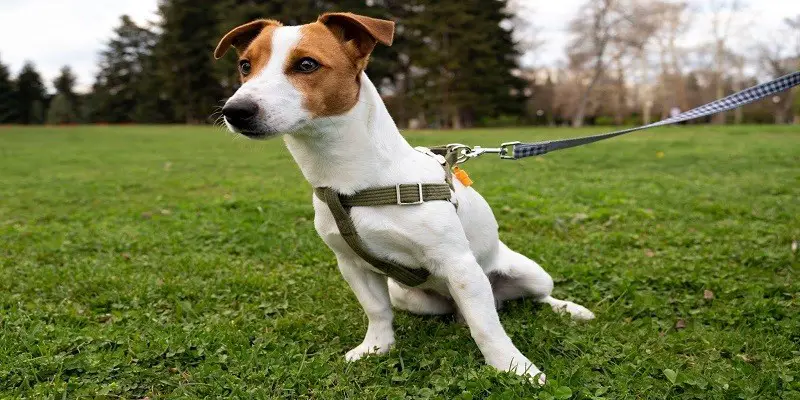Last Updated on April 23, 2025 by Pauline G. Carter
Walking your dog is usually a joyous and beneficial activity for both you and your furry friend. But when the scorching summer heat hits, it’s essential to be mindful of how the rising temperatures can affect our four-legged companions. Just like us, dogs are susceptible to heatstroke, a dangerous condition that can have severe consequences if not detected and treated promptly.
In this blog post, we will explore what heatstroke is, the signs to watch out for in your pet, as well as some valuable safety advice on how to prevent it during a heatwave. So grab a cool drink and let’s dive into this important topic to ensure the well-being of our beloved canine companions!
What Is Heatstroke?
Heatstroke is a serious condition that occurs when a dog’s body temperature rises to dangerous levels. It can happen when the weather is hot and humid, especially during heatwaves. Dogs are more susceptible to heatstroke because they cannot regulate their body temperature as effectively as humans.
During hot weather, it’s important for pet owners to be aware of the signs of heatstroke in dogs. These may include excessive panting, drooling, rapid heartbeat, lethargy, weakness or collapse. Some dogs may also experience vomiting or diarrhea.
Remember that prevention is key when it comes to protecting your furry friend from heatstroke. By being vigilant about keeping them cool and hydrated during hot weather conditions, you can ensure their safety and well-being all year round.
Signs of Heatstroke in Dogs
Heatstroke can be a serious and potentially fatal condition for dogs. It occurs when their body temperature rises to dangerous levels, typically above 104 degrees Fahrenheit. As responsible pet owners, it is important to be aware of the signs of heatstroke in dogs and take immediate action if you notice any symptoms.
Panting: One common sign of heatstroke is excessive panting. Dogs regulate their body temperature by panting, but if they are unable to cool down effectively, it can indicate that they are overheating.
Other Such Signs: Other signs include drooling excessively, appearing lethargic or weak, vomiting or diarrhea, stumbling or collapsing, and having bright red gums or tongue.
It’s crucial to pay attention to these signs and act quickly. If you suspect your dog has heatstroke, move them to a cooler area immediately. Offer them small amounts of water but do not force them to drink. Use cool (not cold) water on their belly and paws while seeking veterinary help.
How To Prevent Heatstroke In Dogs
Preventing heatstroke in dogs is crucial during hot summer months. There are several measures you can take to ensure your furry friend stays safe and comfortable.
- First and foremost, avoid walking your dog during the hottest parts of the day, usually between 10 a.m. and 4 p.m. Instead, opt for early morning or late evening walks when temperatures are cooler. Also, use personalised dog harness for taling your lovable pets to walk for comfort is utmost important.
- Provide plenty of fresh water for your dog at all times, especially when they’re outside. Consider investing in a portable water bottle with a built-in bowl for easy hydration on the go.
- Shade is essential for preventing heatstroke. Make sure there are shaded areas available wherever you and your dog spend time together outdoors. You can also set up an outdoor umbrella or canopy to create additional shade if needed.
- Avoid leaving your pup in a parked car, even for just a few minutes. The temperature inside a car can rise rapidly, leading to dangerous conditions within minutes.
By following these preventive steps, you’ll greatly reduce the risk of heatstroke and keep your canine companion safe and happy throughout the summer season!
What To Do If Your Dog Has Heatstroke
If you suspect that your dog has heatstroke, immediate action is crucial to prevent further complications. Here’s what you can do:
Move your dog to a cool area: Get them out of direct sunlight and into a shaded or air-conditioned space. If possible, place them in front of a fan.
Offer water: Allow your dog to drink small amounts of cool (not cold) water. Avoid forcing large amounts as it may increase the risk of vomiting.
Cool down gradually: Wetting their body with cool (not ice-cold) water can help lower their temperature. Focus on areas such as the belly and paws, where blood vessels are closer to the surface.
Use wet towels or ice packs: Wrap your dog in damp towels or apply ice packs wrapped in cloth around their neck, groin, and armpits to facilitate cooling.
Contact your vet immediately: Even if your dog seems better after cooling measures, it is essential to seek veterinary assistance promptly for a thorough examination and appropriate treatment.
Remember, heatstroke can be life-threatening for dogs; therefore, taking preventative measures during hot weather is vital for their well-being! Always keep a puppy starter kit handy. Stay vigilant and ensure that they have access to shade, fresh water at all times, and never leave them unattended in vehicles during heatwaves.
Conclusion
Keeping your dog safe and comfortable during a heatwave is crucial. By understanding the signs of heatstroke in dogs and taking necessary precautions, you can help prevent this potentially life-threatening condition.
By following these tips and staying vigilant about protecting our furry companions from excessive heat exposure, we can ensure they stay healthy and happy even during scorching summer days!

